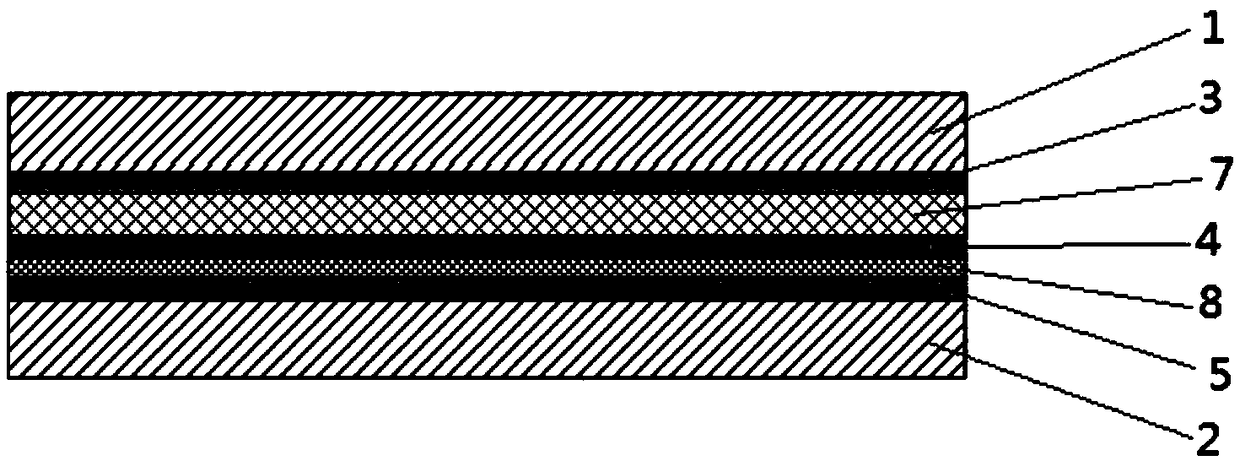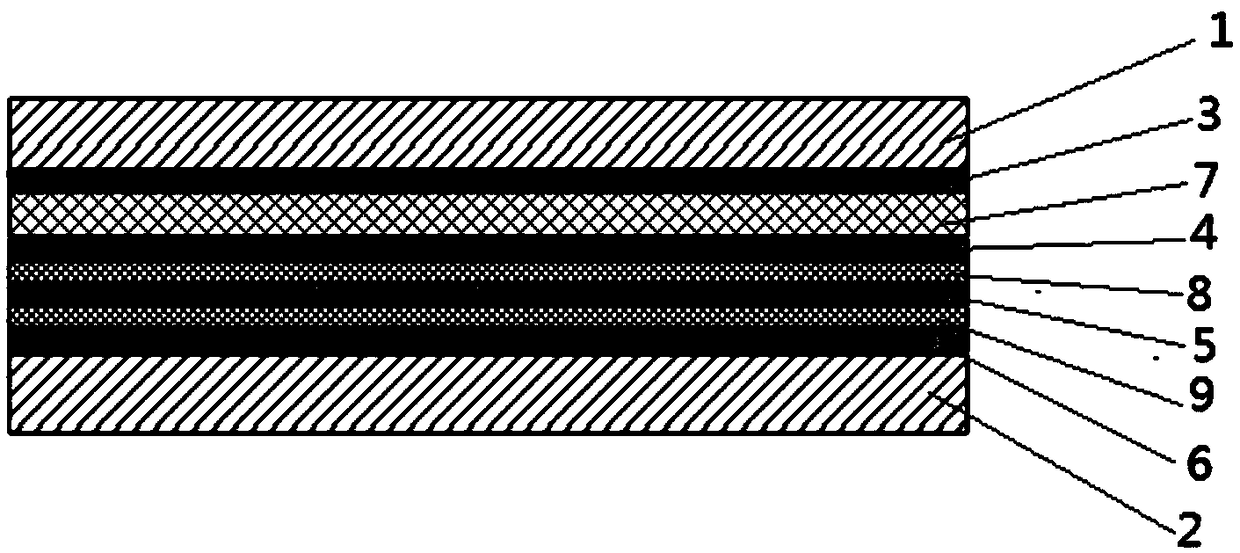A hand-controlled color-changing glass with anti-crosstalk function and an automobile including the glass
A color-changing glass and anti-crosstalk technology, applied in the input/output process of data processing, input/output of user/computer interaction, instruments, etc., can solve problems such as crosstalk, discoloration, inconvenient use, etc., and achieve two-dimensional control , low structural cost, and the effect of improving accuracy
- Summary
- Abstract
- Description
- Claims
- Application Information
AI Technical Summary
Problems solved by technology
Method used
Image
Examples
preparation example Construction
[0055] The present invention also provides a method for preparing a manually controlled color-changing glass with an anti-crosstalk function, which includes the following steps: firstly, at least two transparent conductive layers are arranged between two layers of glass plates, and at least two transparent conductive layers are arranged between the two transparent conductive layers. Liquid crystal film; then a plurality of mutually insulated conductive regions are arranged on at least one transparent conductive layer, and the conductive regions are used as driving signals of liquid crystals and / or excitation signals of capacitive touch sensors; finally, the control circuit of the color-changing glass A steering switch is arranged in the middle, and the driving signal of the liquid crystal and the excitation signal of the capacitive touch sensor are periodically connected to the steering switch in a time-sharing manner; wherein, each switching period T is composed of two sub-peri...
Embodiment 1
[0059] In this embodiment, the function of opening up and down of the color-changing glass and opening to a certain place is realized by sliding up and down on the glass or waving gestures up and down near the glass.
[0060] Such as Figure 4 As shown, the first transparent conductive layer is provided with a whole conductive area, and the second transparent conductive layer is provided with at least three horizontally insulated conductive areas, and the adjacent horizontally insulated conductive areas form a vertical capacitive touch sensor.
[0061] When the human body slides from top to bottom on the glass or waves from top to bottom near the glass, the capacitance value of the vertical capacitive touch sensor composed of multiple horizontally insulated conductive areas will change sequentially from top to bottom. The circuit detects the capacitance values of multiple vertical capacitive touch sensors, and generates control signals according to the detected capacitance ...
Embodiment 2
[0064] In this embodiment, the function of opening the color-changing glass left and right and opening to a certain place is realized by sliding left and right on the glass or waving gestures left and right near the glass.
[0065] Such as Figure 5 As shown, the first transparent conductive layer is provided with a whole conductive area, and the second transparent conductive layer is provided with at least three vertically insulated conductive areas, and the adjacent vertically insulated conductive areas form a horizontal capacitive touch sensor.
[0066] When the human body slides from left to right on the glass or waves from left to right near the glass, the capacitance value of the horizontal capacitive touch sensor composed of multiple vertically insulated conductive areas will change from left to right in turn, and the detection The circuit detects the capacitance values of multiple horizontal capacitive touch sensors, and generates control signals according to the de...
PUM
 Login to View More
Login to View More Abstract
Description
Claims
Application Information
 Login to View More
Login to View More - R&D
- Intellectual Property
- Life Sciences
- Materials
- Tech Scout
- Unparalleled Data Quality
- Higher Quality Content
- 60% Fewer Hallucinations
Browse by: Latest US Patents, China's latest patents, Technical Efficacy Thesaurus, Application Domain, Technology Topic, Popular Technical Reports.
© 2025 PatSnap. All rights reserved.Legal|Privacy policy|Modern Slavery Act Transparency Statement|Sitemap|About US| Contact US: help@patsnap.com



